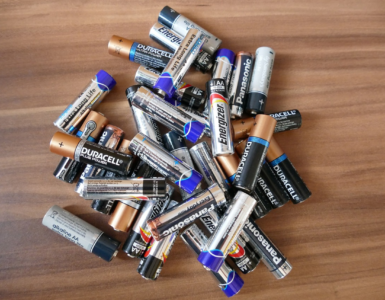IDTechEx discusses what will drive the li-ion battery recycling market.
Li-ion batteries dominate the electric vehicles (EV), consumer electronics and stationary energy storage markets. However, the sustainability of these batteries through their entire lifecycle must be managed, including at End-of-Life (EOL). IDTechEx’s new report, “Li-ion Battery Recycling Market 2023-2043“, finds that an estimated 23.8 million tonnes of lithium-ion batteries will be recycled in 2043. Several factors will drive recycling market growth, helping to maximize utilization of increasing feedstock availability.
Minimize Supply Chain Risk
Fears over supply bottlenecks to lithium, nickel, and cobalt in the medium term provides an opportunity for recycling. Recycling Li-ion batteries allows such valuable raw materials to be obtained and re-introduced into new battery manufacturing. This can help to provide a more secure, diversified, and local supply of raw materials.
🔥 What about we co-host a webinar? Let's educate, captivate, and convert the battery economy!
Batteries News is the global go-to online magazine for the battery industry, we can help you host impactful webinars that become a global reference on your topic and are an evergreen source of leads. Click here to request more details
This also starts to reduce reliance on mining for virgin materials, bringing environmental benefits. Key regions such as the US and Europe are looking to expand their recycling capacities to aid in domesticating critical material supply. However, these regions are mostly focused on producing black mass from mechanical recycling techniques.
This requires further refining into metal salts, which can then be further processed into new cathode precursor material. Very few companies in these regions (e.g., Fortum in Europe) have currently established commercial-scale hydrometallurgical recycling plants to produce metal salts. Therefore, a substantial domestic supply of usable intermediary products to be used in new battery manufacturing in these regions is still some years away.
Policies
While China has some of the most extensive policies regarding battery end-of-life management, other regions, such as the EU and India, have introduced policies that will drive battery recycling. The EU Battery Regulation, soon coming into force, specifies collection rate targets for EV batteries, as well as targets for overall recycling efficiency, specific material recovery efficiency and minimum recycled contents in new batteries.
Some of these targets are initially set for 2025, with others specified from 2028 or later and will increase over time. India’s ‘Battery Waste Management Rules 2022’ also specify similar targets. Extended producer responsibility (EPR) will force OEMs to be responsible for financing the collection of EVs that have reached EOL, which will help in meeting collection rate targets for recycling.
In the US, the introduction of Advanced Manufacturing Production Credits (PTC) through the Inflation Reduction Act (IRA) provides an incentive for EV battery manufacturers to receive tax credits if a minimum percentage, by value, of critical minerals sourced from recycling in North America is used in new EV batteries. This should start to drive the use of recycled materials in new EV batteries sourced domestically in the US in the coming years.
Capture Embedded Value
The majority of consumer devices currently use lithium-cobalt-oxide (LCO) batteries. The intrinsic value of these batteries is higher than those used in EV batteries or stationary energy storage due to the higher volume of cobalt present in LCO batteries. Therefore, recycling LCO batteries could well be profitable; however, establishing the infrastructure for collecting electronic consumer devices is far more challenging than for EV and industrial batteries.
As a growing number of EV batteries will adopt high-nickel batteries (e.g., NMC 811), these will contain low cobalt content, reducing the embedded value which can be captured. However, processes are continuing to be developed by companies that aim to extract as much material from Li-ion batteries as possible. For a detailed analysis of technology and chemistry trends, please refer to the new IDTechEx report “Li-ion Battery Recycling Market 2023-2043“.
In the latest version of their market report, “Li-ion Battery Recycling Market 2023-2043“, IDTechEx brings the reader a holistic overview of this market, including the following information:
Market Forecasts & Analysis:
- 20-year granular market forecasts (2023 – 2043) for the Li-ion battery recycling market, in both volume and market value.
- Forecast breakdowns are provided by region, cathode chemistry, Li-ion battery sector (manufacturing scrap, EVs, stationary energy storage and consumer electronics), and key metals (lithium, cobalt, nickel, manganese, copper, and aluminum) recovered.
- EVs are split into electric cars, light commercial vehicles, trucks, buses, and two-wheelers (scooters and motorcycles).
- Data is provided in GWh, ktonnes and US$B with a bottom-up analysis of recycling rates.
Recycling regulation and policy:
- Discussion and analyses on Li-ion battery recycling policies in key regions, e.g., China, EU, US, India, etc.
Li-ion recycling processes and technologies:
- Detailed explanations of recycling technologies, including mechanical, hydrometallurgical, pyrometallurgical and direct recycling methods.
Value Chain and Business Models for Li-ion Battery Recycling:
- In-depth analysis of the economics of recycling and the Li-ion recycling value chain.
- Includes discussion of recycling different battery chemistries, battery components and considerations for second-life.
Recycling market overview and 2022–2023 market updates:
- The latest information on commercial recycling capacities by region and company, and roadmaps for future commercial-scale recycling facilities by region and recycling technology.
- Key player activity timelines for Q4 2021 – Q1 2023, including investments/funding, joint ventures, and supply agreements.
- 25+ company profiles on key battery recycling players.
To find out more about this new report, including downloadable sample pages, please visit www.IDTechEx.com/LIRecycling.
IDTechEx Discusses What Will Drive the Li-ion Battery Recycling Market, BOSTON, June 12, 2023








